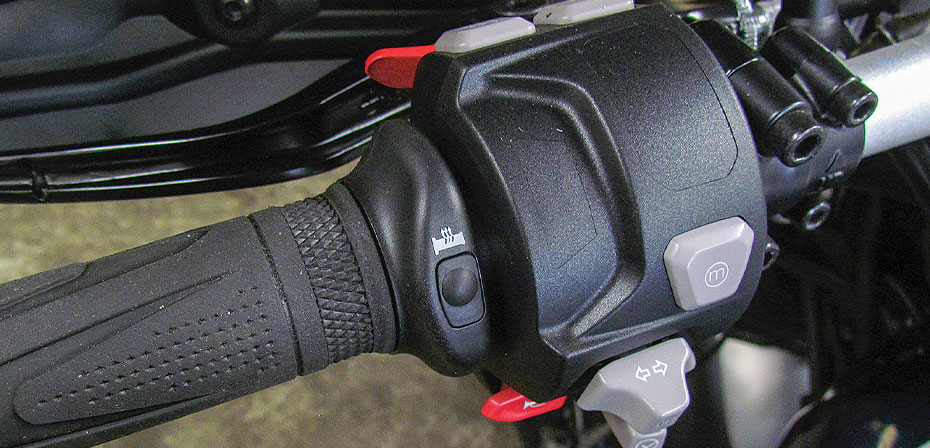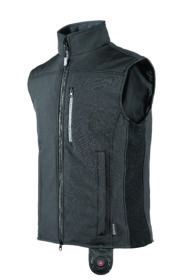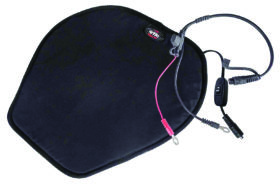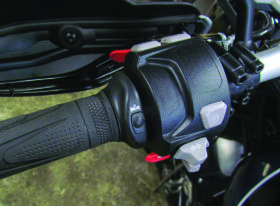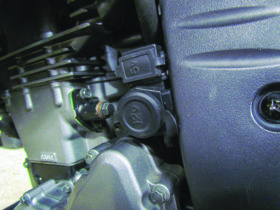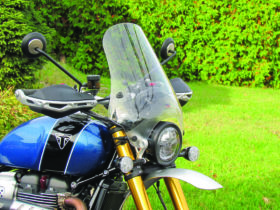With a few modifications, you can you turn your bike into a comfortable touring machine.
If you own a big touring bike, chances are that it’s already equipped with a bunch of amenities that make long-distance travel more comfortable. Probably the biggest single factor that affects long-term comfort — aside from the riding position — is how well you are protected from the elements. A touring bike is equipped with a large, protective fairing, but its weather-beating arsenal might not end there. It might also have heated grips, a heated seat and an accessory outlet into which a rider can plug heated riding gear.
If you own a fairing-free motorcycle, adding a windshield will greatly improve its weather-beating capabilities.
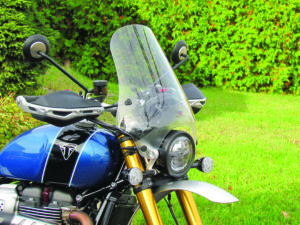 I recently bought a Triumph Scrambler 1200 XE, and while it handles pavement and dirt exceptionally well, and its riding position is long-haul approved, it offers little in the way of weather protection. Most aftermarket windscreen makers offer both bike-specific and universal-fit models. I found a National Cycle (nationalcycle.com) 17-inch tall universal windscreen that looked right for my Scrambler.
I recently bought a Triumph Scrambler 1200 XE, and while it handles pavement and dirt exceptionally well, and its riding position is long-haul approved, it offers little in the way of weather protection. Most aftermarket windscreen makers offer both bike-specific and universal-fit models. I found a National Cycle (nationalcycle.com) 17-inch tall universal windscreen that looked right for my Scrambler.
Installing a universal-fit accessory is always a gamble, since, despite its name, fit is not guaranteed. Such windscreens usually utilize the handlebar and fork tubes for mounting. Fortunately, the National Cycle screen and its mounting hardware fit easily onto the Scrambler. One of the benefits of an accessory screen is that it can be adjusted for height and angle during installation. Adjusting it correctly is a trial-and-error process, but once it’s done right, it needs no further tampering. In many cases, like with my screen, it can be removed in a matter of minutes — a great feature for me, since I plan on using it only early and late in the riding season, when temperatures are lower.
I also installed heated grips on the Scrambler, but those were made-to-measure Triumph accessories which were pricey. They plugged right into the bike’s wiring harness and are compatible with the bike’s CANbus wiring.
My KLR650 has universal-fit heated grips, which require some electrical knowledge to install. There are several ways you can connect heated grips to your bike, but one you should avoid is a direct connection to the battery — and most grips are designed to be installed in this manner. You risk killing the battery if the grips are accidentally left on with the ignition switch off, unless they are designed to turn off automatically, like some Oxford grips, for instance.
An alternative is to tap into a switched power source (like a taillight wire) to feed a relay, which will then feed battery power to the heated grip switch. Wiring them in this fashion will shut off the grips when the ignition switch is turned off. It’s important to use a relay between the feed wire and the grips because the grips draw a lot of current, which might overload the circuit being tapped and burn a fuse. On bikes with CANbus electrical systems, a CANbus controller module must be installed to manage power to accessories. There are several CANbus controllers available, some of which are bike-specific.
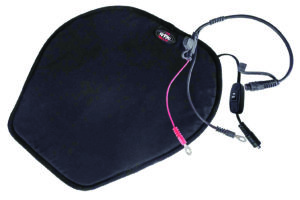
While aftermarket heated seats are not yet readily available, heated seat pads are. Gears Canada (gearscanada.com) offers one designed to sit atop the seat for just $62. Wiring is included for a direct connection to the battery, but like the heated grips, you should connect it to a switched power source or CANbus controller.
All of my bikes have a 12-volt accessory outlet. It’s preferable to install an accessory outlet directly to the battery, so you can access power with the ignition switch turned off. It’s absolutely necessary to have a fused connection, though, for safety.
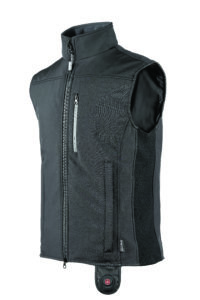
Keeping your body’s core warm will help keep your extremities warmer for a longer time. To help stave off hypothermia if your core temperature begins to drop, your body will slow blood circulation to your hands and feet. An easy fix for this is a heated vest, like the one from Canadian company ewool (ewool.com). The ewool Pro+ heated vest ($599) (see review in December 2020 issue or at motorcyclemojo.com) comes with a rechargeable battery that provides up to seven hours of heat, or it can be wired to the bike for unlimited heat time. The beauty of a battery-powered vest is that you can keep warm even when off your bike.
Adding electrical accessories will put an extra load on the charging system, so it’s imperative to make sure your bike can handle it. You can try calculating how much energy will be drawn from the bike using complex equations, or you can do it the easy way: Run the bike and measure battery voltage with all of the accessories plugged in and the engine revving at about 2,000 rpm. If battery voltage begins to drop steadily, you’ve got too many accessories plugged in.
You need not spend a fortune on a new bike if the one you have now isn’t ideal for long hauls. Just a few affordable, well-thought-out accessories will make it a worthy long-distance partner.
Technical articles are written purely as reference only and your motorcycle may require different procedures. You should be mechanically inclined to carry out your own maintenance and we recommend you contact your mechanic prior to performing any type of work on your bike.









